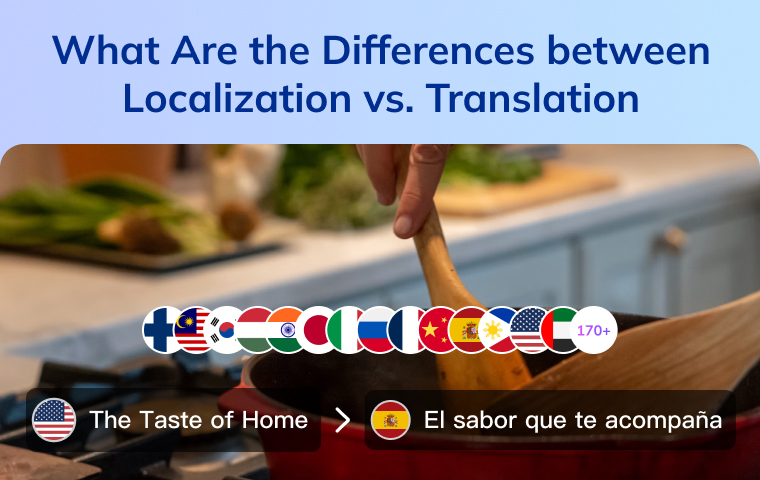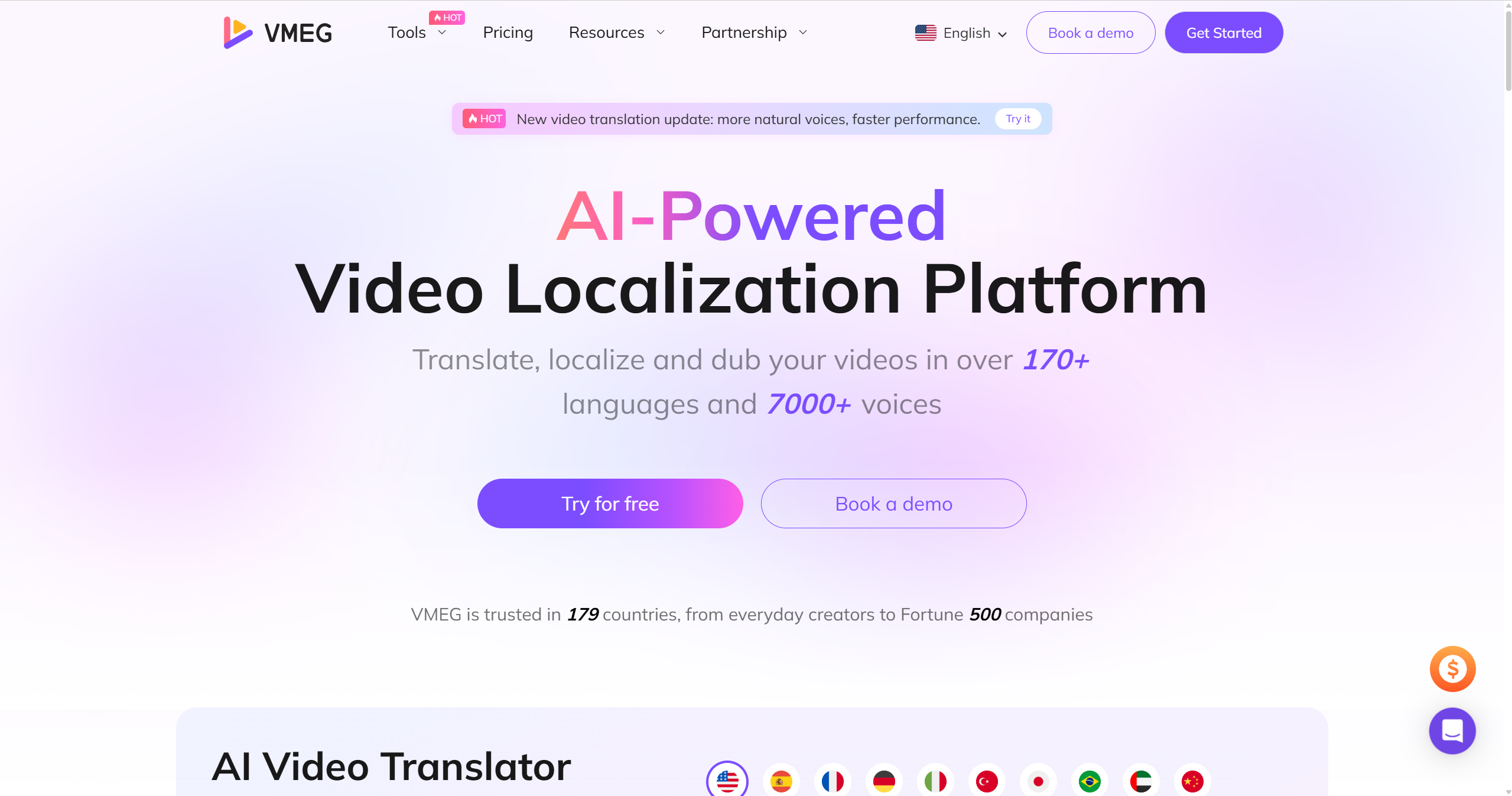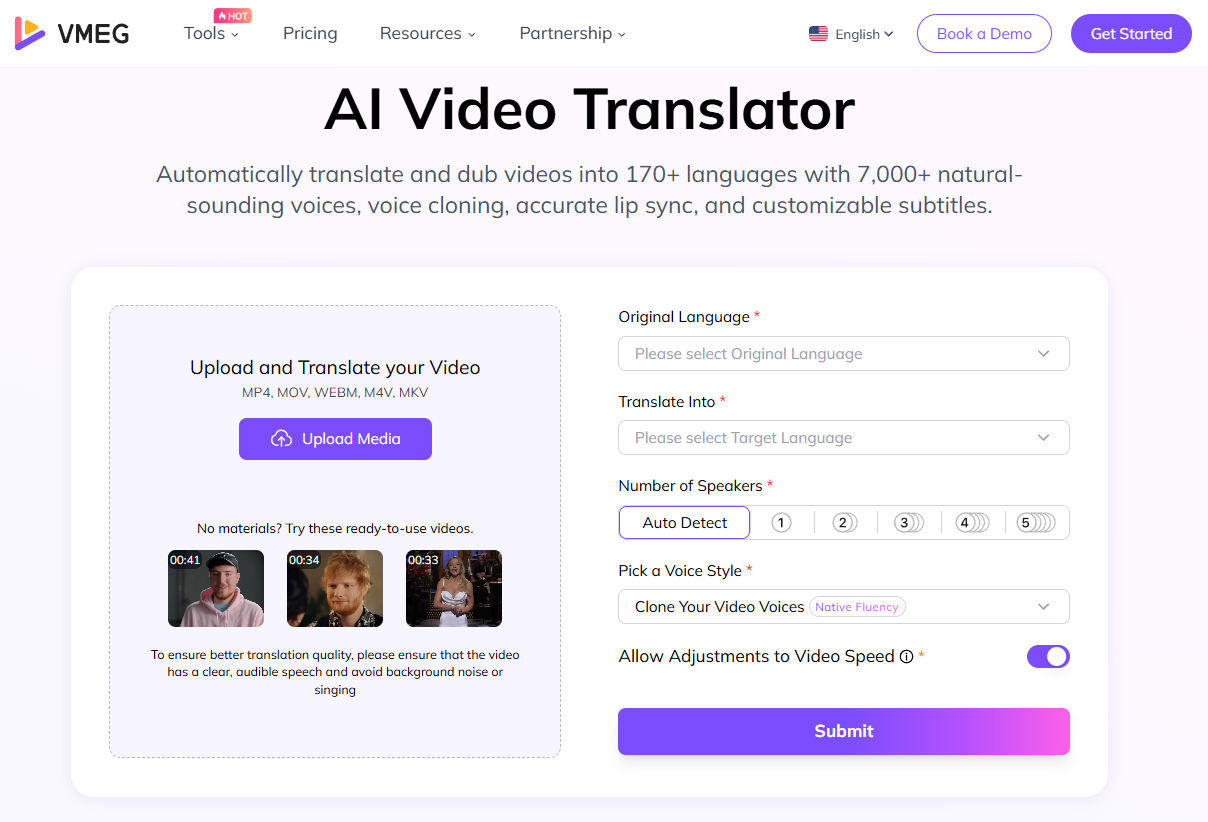
In this globalization, everyone participates in localization and translation. But what is the difference between translating and localizing? Localization adapts a service to fit a new market, a specific area, or culture, while translation is a simpler process of converting text from one language to another.
In short, translation is one part of the globalization puzzle, while localization transforms how a product or message feels to a new audience.
Understanding both helps businesses tailor content for clarity and connection across global markets. A literal translation might make your website readable in Spanish, but only localization ensures it feels natural to Spanish speakers.
In this article, we dive into the differences and relationships between localization and translation, from definitions and cultural adaptation to workflow and examples. By the end, you will have a clear understanding of how to leverage both translation and globalization to maximize their impact.
Localization vs. Translation in Simple Terms
Let’s start with clear definitions of localization and translation, so you can easily grasp how they differ and how they relate.
What Is Translation?
Translation is the process of turning a video, audio, or written text from one language into another, to make sure the target reader understands what the source author intended to say. It breaks language barriers in cross-cultural communication.
For example, translating “Terms and Conditions” from English to French or Spanish is a direct linguistic task. The translator ensures that every clause conveys the same legal intent. The focus is on accuracy and equivalence.
What Is Localization?
Localization includes translation andgoes several steps further. It involves adapting all content (a product, website, app) and the entire experience, so that it feels natural, familiar, and culturally relevant to the target audience. Localization can include adjusting:
- Visuals (images, symbols, color meanings)
- Units of measurement (miles → kilometers)
- Date and number formats (MM/DD/YYYY → DD/MM/YYYY)
- Currencies and pricing (USD → EUR or MXN)
- Cultural references, idioms, humor, and tone
- Voiceover, subtitles, and UI layout
For example, you adapt to the full experience, so a user in Brazil feels your content was made for them, not simply translated for them.
You can see translation as the foundation, and localization is the architecture built upon it. Every localization project includes translation, but not every translation project requires localization.
Many people confuse the two, which can lead to missing deeper cultural and functional adaptation. A dubbed movie with mismatched lip-sync is an example of stopping at translation when the market actually demands localization.
Localization vs. Translation: 5 Key Differences
Here are five major aspects where localization and translation differ.
1. Scope: Words vs. Experience
Translation focuses on converting text (or audio) from one language to another.
Localization expands beyond text to visuals, UI/UX, date/time formats, units of measurement, cultural references, local legal/regulatory compliance, and more.
A tourism website translated into Italian still works. But a localized version changes the currency, highlights Italian travel seasons, replaces U.S. landmarks with European examples, and adjusts idioms like “fall getaway” to “autumn escape.”
2. Cultural Adaptation: Accuracy vs. Empathy
A translator’s goal is correctness; a localizer’s goal is connection.
An English slogan like “Think outside the box” might sound confusing when directly translated into Japanese. Localization refers to the use of a culturally equivalent metaphor, such as “Expand your horizons,” ensuring emotional resonance rather than linguistic precision.
3. Technical Considerations
Translation is mostly concerned with linguistic equivalence, like vocabulary and grammar.
Localization also considers format and layout changes. Technical localization and adaptation ensure functionality matches linguistic change.
4. Workflow
Translation is a more straightforward process: translate, proofread, and deliver.
Localization often includes: content translation, cultural adaptation, design or visual modification, linguistic and functional testing, and native reviewers.
5. Goal
Translation is to let the message and information be readable and understandable.
Localization is to make the experience feel natural and native to the target audience, minimizing friction and maximizing engagement.
Localization vs. Translation Examples
Here are practical examples in different industries, showing how the two approaches differ.
E-commerce Store:
- Translation: Product descriptions from English to German.
- Localization: Product sizes converted to EU standards, currencies to euros, and the checkout process redesigned to align with local payment preferences.
Video Game:
- Translation: On-screen text translated into Korean.
- Localization: Character dialogue rewritten to fit Korean humor, cultural taboos respected, and voice acting redone with local accents.
Marketing Campaign:
- Translation: English tagline “The Taste of Home” rendered literally into Spanish.
- Localization: Adapted into “El sabor que te acompaña” (“The flavor that’s always with you”), evoking a more emotional connection for Latin audiences.
Software Interface:
- Translation: Menu items translated from English to Arabic.
- Localization: Interface mirrored right-to-left, fonts adjusted for legibility, and helped articles rewritten with local context.
How to Choose Between Localization and Translation
So when should you just settle for translation, and when is localization required? Use translation to convey information; use localization to build connections. Here are guiding considerations:
Scenario | Use Translation | Use Localization |
Content Type | Manuals, internal docs, technical data, short-term testing, or budget-sensitive projects | Marketing, websites, apps, games, or any creative content |
Primary Goal | Clarity, speed, cost-efficiency | User experience, emotional resonance |
Outcome | The content is understood | The content feels native |
Translation is ideal for audiences that simply need to understand, not necessarily feel the message. While localization requires a larger investment, it typically pays off through stronger engagement, brand loyalty, and long-term market success.
Making the Decision
The right choice depends on your goals, audience, and resources. You can use the steps below to decide.
- Clarify your purpose: Are you informing or persuading? If the goal is persuasion or emotional resonance, lean toward localization.
- Understand your audience: Consider how much cultural nuance affects comprehension or user trust.
- Evaluate your content type: Is it plain text, or does it include visuals, interface elements, or voice components?
- Balance cost with impact: Estimate how much cultural adaptation could improve conversions or brand credibility.
- Use a hybrid approach: Many global companies combine both — translating back-end or technical materials while localizing customer-facing assets.
For example, a SaaS company might translate its help documentation for clarity but localize its marketing videos and landing pages to reflect local tone, imagery, and idioms — ensuring every user feels the brand speaks their language, literally and culturally.
Top Localization Platform Recommendation
VMEG AI is a powerful and AI-driven localization platform that helps you expand worldwide more easily than ever. It aims to provide fast and professional video translation and dubbing.
Its user-friendly interface and secure, format-flexible workflow make it an ideal solution for content creators, educators, and marketers.
Its user-friendly interface and secure, format-flexible workflow make it an ideal solution for content creators, educators, and marketers.

Alt: Top AI Video Localization Platform - VMEG AI
What features are beneficial for localization:
- Multilingual Support: Translate videos and audios in over 170+ languages.
- Advanced Voice Cloning: 7000+ natural-sounding dubbing voices that maintain the original voice's characteristics and emotional tone.
- Comprehensive Tools: Combine transcription, translation, subtitle generation, and dubbing for a global audience, with auto-detection of speakers and original language.
- Rapid AI Processing: Translate and dub a 2-hour video in under 20 minutes.
- Security & Free Trial: All files are encrypted for security. Start with a free trial offering 60 credits to test the platform.
- Simple Workflow: Upload a file online and get localized content straightforwardly.

The Future of Localization and Translation
With the rise of AI translation tools like DeepL, ChatGPT, and VMEG AI, the line between translation and localization is becoming more dynamic. AI can now handle multilingual text and even mimic tone, but human review remains vital for cultural and emotional precision.
Modern localization increasingly blends machine translation for speed with human adaptation for depth. Some AI-driven platforms even allow voice cloning, regional accent matching, and cultural tone adjustment — bridging the gap between linguistic accuracy and local authenticity.
In short, the future isn’t “human vs. machine” but human-guided localization powered by AI translation.
Frequently Asked Questions
What is the difference between direct translation and localization?
Simply, translation is about understanding, and localization is about engagement.
What is an example of language translation and localization?
For example, if you just need someone to read a technical manual, translation suffices. But if you want users to buy, subscribe, or feel represented, localization becomes essential. It bridges emotional and cultural gaps, making your message not only clear but compelling.
Is localization more expensive than translation?
Yes. Localization involves more than language conversion (translation): it requires cultural adaptation, design adjustments, and sometimes technical development.
Can AI tools replace human localization experts?
AI translation tools are excellent for speed and cost-efficiency, but most often you need to check cultural nuance, humor, and tone. The best approach combines both: use AI for the initial translation, then have human linguists localize and refine it to match local culture and context.
Conclusion
Translation and localization are both for cross-lingual communication, but their purposes differ. Translation helps people understand, but localization makes them believe it was made for them.
Whether you’re launching a product, building an app, or expanding your content globally, knowing when to translate and when to localize can dramatically influence your success. By balancing both intelligently, starting with precise translation and layering cultural adaptation, you’ll build experiences that don’t just cross borders, but connect hearts and minds across them.
